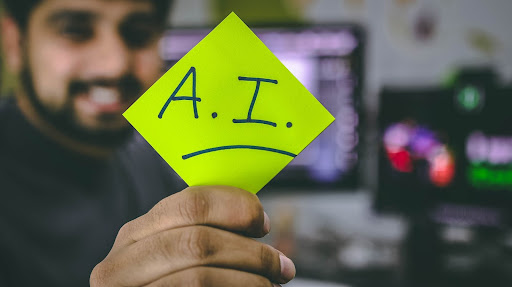Have you been hearing more about artificial intelligence (AI) lately? I know that the Terminator movies come to mind immediately for me, but there are really quite a few advantages. This is a whole new opportunity to explore different ways of learning. When I first started exploring this idea, it made me really nervous, but discussing with other educators I saw that AI is quickly becoming a tool for educators to enhance the learning experience for students.

One of the most exciting ways that AI is being used in education is for personalized learning. Personalized learning often involves using technology to adapt the learning experience to each individual student’s needs, preferences, and learning style. This can be done by using AI algorithms to analyze student data, such as their test scores and learning progress, and then using this information to create custom-tailored lesson plans and activities. Adaptive learning is a form of personalized learning that uses AI to adjust the difficulty of a lesson or activity based on a student’s performance. For example, if a student is struggling with a particular concept, the AI algorithm will adjust the lesson to make it easier for them to understand. On the other hand, if a student is at mastery, the AI algorithm will adjust the lesson to make it more challenging. Check out this article “Using AI for Personalized Learning” by ANUVRAT DUTTA.

AI can also be used to automate administrative tasks, such as grading and providing feedback. This can be done by using natural language processing (NLP) to automatically grade written assignments, such as essays and research papers. Another great way to use this is to change the reading level of a text so that you can have all students read about the same topic. Also, AI can be used to chat bots that can provide instant feedback to students on their thinking.
So where does this leave us in education? When we think about the types of assignments that are typically given to students can be completed by AI. So do we need to start changing the way that we assess? Check out this video from Simlilearn about What is Artificial Intelligence?
If you are interested in incorporating AI into your teaching practice, there are a few things you can do to get started. Familiarize yourself with the different types of AI that are available and how they can be used in education. This will help you to understand the potential benefits and limitations of each type of AI. Here are some examples:
- Virtual personal assistants like Apple’s Siri, Amazon’s Alexa, and Google Assistant
- Self-driving cars, such as those being developed by Waymo and Tesla
- Image and speech recognition systems, like those used by Google Photos and Amazon’s Rekognition
- Recommendation systems, such as those used by Netflix and Spotify to suggest content to users
- Language translation systems, such as Google Translate
- Robotics, such as those used in manufacturing and logistics
- Medical diagnosis systems, such as IBM’s Watson Health
- Fraud detection systems, such as those used by banks to detect suspicious transactions
- Game-playing AI, such as the program AlphaGo, which defeated the human world champion in the game of Go.
- Plus more coming out as we speak!
Whether you are brand new to using AI or if you already are using AI in your classroom, we want to know your thoughts. How might you use this in the classroom? Please join in the conversation by tagging us @KaneCountyROE.

Raven Szalkowski – Professional Learning Coordinator
(t): 630-762-2056
(e): rszalkowski@kaneroe.org
